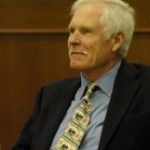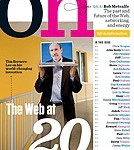Reverse Innovation: How Designing for Emerging Economies Brings Benefits Back Home
Point: Creating new products & services for developing countries requires radical innovation and opens new opportunities in developed world markets as well
Story: GE Healthcare sells sophisticated medical imaging devices around the world. ![]() Historically, they have sold these high-end machines in emerging economies like India. But only 10% of Indian hospitals can afford a $10,000 ECG machine. Reaching the other 90% of the market takes more than simply cutting a few costs. It requires radical innovation and an in-depth understanding of local conditions.
Historically, they have sold these high-end machines in emerging economies like India. But only 10% of Indian hospitals can afford a $10,000 ECG machine. Reaching the other 90% of the market takes more than simply cutting a few costs. It requires radical innovation and an in-depth understanding of local conditions.
For example, most Indians live in rural areas. That means they don’t have a local hospital to go to. Rather, the machine needs to go to them, and no rural healthcare clinic is going to lug a $10,000 machine into the field even if it could afford the device. Achieving the goal of a lightweight, reliable, simple-to-use ECG machine took radical re-thinking. GE built a device, called the MAC i, that could fit in a shoulder bag, has a built-in replaceable printer, and cost only $500. In addition, because the device would be used in rural locations with scant access to electricity, GE designed a battery that could do 500 ECGs on one charge. To make it easy to use, GE designed the machine to have only three buttons. Finally, just because the device is inexpensive doesn’t mean it’s dumb. Because the cost of a copy of software is zero, GE installed professional-level analysis software to aid rural doctors.
With its new MAC i, GE has unlocked a whole new market in developing countries. Beyond that, GE has also opened up new opportunities back home — and that’s the reverse innovation side of the story. How? The portable ECG machine with a $500 price tag is ideal for use in ambulances, saving lives of accident victims in rich countries as well. Cheap, portable, and easy-to-use devices are desirable in any country.
Action:
Reverse innovation means designing a product for a developing country and bringing that innovation back home.
- Make the product extremely low in cost so that it is price-acceptable in developing markets and opens up new sales opportunities in developed markets
- Start from the ground up with a radical rethinking. (See also the Tata Nano example.)
- Plan for intermittent electricity
- Make the product modular to facilitate remote repair
- Make the product easy to use, like GE’s three-button ECG machine
Sources:
Vijay Govindarajan, “Reverse Innovation: A New Strategy for Creating the Future” HSM webinar March 18, 2010
Prof. Govindarajan will be speaking more on this topic at the World Business Forum in NYC October 5-6, 2009
1 Comment »Case study, Growth, How-to, Innovation, International, New Product Development, Strategy











